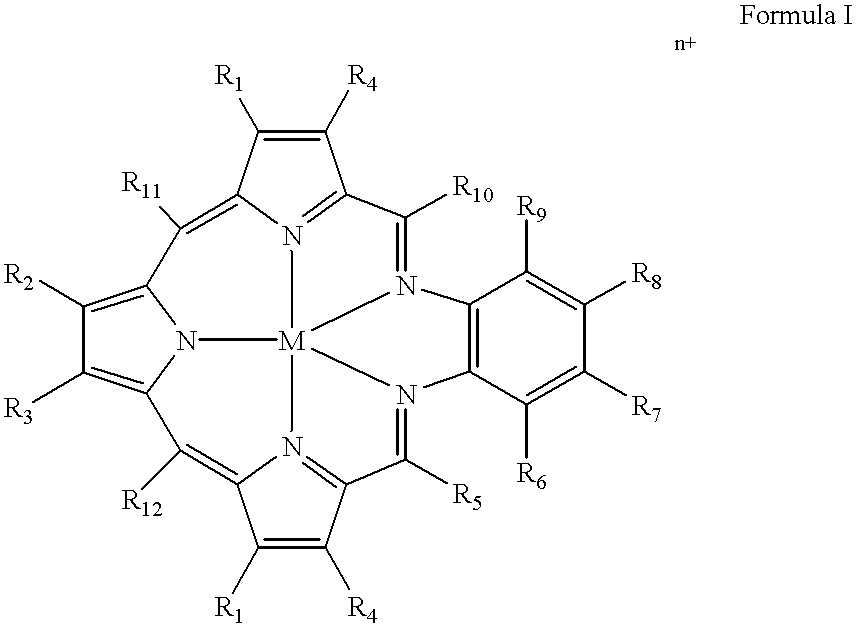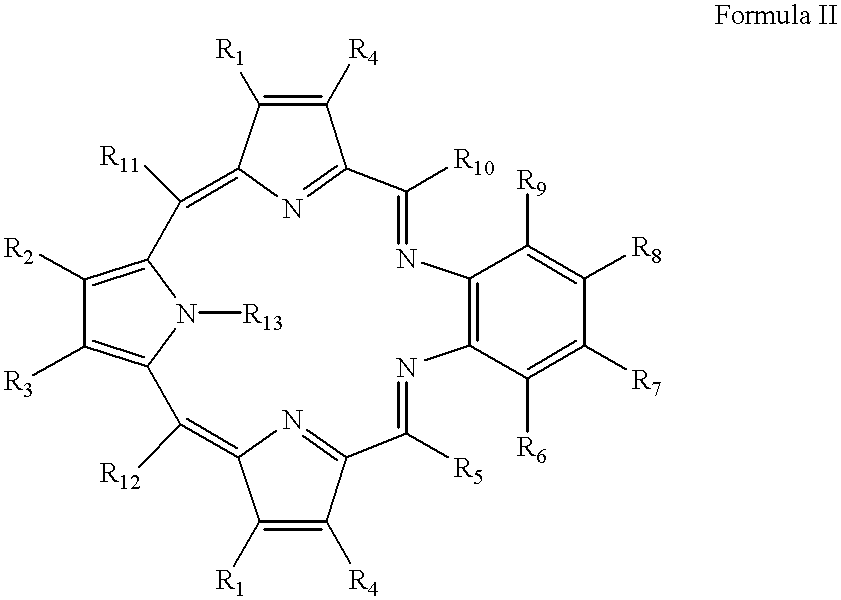Intracellular sensitizers for sonodynamic therapy
- Summary
- Abstract
- Description
- Claims
- Application Information
AI Technical Summary
Problems solved by technology
Method used
Image
Examples
example 1
Determination of Sonodynamic Sensitizing Activity In Vitro Utilizing the Murine Leukemia L1210 Survival Assay
[0056] The effect of low-level, non-thermal ultrasound on the murine leukemia L1210 cell line in culture, measuring ultrasound-induced cytotoxicity is determined by a modification of the procedure initially described by Kessel et al., 1994. Int. J. Radiat. Biol., 66 (1994). Sonodynamic therapy with and without a texaphyrin and with and without low intensity irradiation of ultrasound. A murine 1210 cell line was used, The cytotoxicity of low-intensity ultrasound on murine leukemia L1210 cells is associated with cell fragmentation, and was detected by measuring the inhibition of the active transport of a non-metabolized amino acid (cytoleucine) and by a viability assay.
[0057] Cell Culture Systems--Murine leukemia L1210 cells were grown in Fischer's medium (GIBCO, Grand Island, N.Y.) supplemented with glutamine, 10% horse serum and gentamicin. All operations were carried out at ...
example 2
Determination of Sonodynamic Sensitizing Activity Utilizing Experimental Kidney Tumor Assay
[0065] This procedure is a modification of a procedure initially described by Yumita et al., Cancer Letters 112 (1997).
[0066] Colon 26 tumor cells are implanted into one kidney in a male CDF mouse (the other kidney remaining untreated and serving as a control). After 14 days, 1.0 mg / kg of a texaphyrin is administered by intravenous injection. 24 Hours later, the mouse is anesthetized and the tumorous kidney exteriorized. The position and the angle of the mouse are adjusted to facilitate ultrasound ultrasound penetration of the entire kidney, with the tumor at the focal spot. Ultrasound is delivered in continuous waves by a focused array transducer. The tumor is exposed to focused ultrasound for 5 minutes in a progressive wave mode, at a frequency of 0.5 MHz for the first wave and 1 MHz for the second wave, at an intensity of 8 W / cm.sup.2 followed by the second-harmonic superimposition of ultra...
PUM
 Login to View More
Login to View More Abstract
Description
Claims
Application Information
 Login to View More
Login to View More - R&D
- Intellectual Property
- Life Sciences
- Materials
- Tech Scout
- Unparalleled Data Quality
- Higher Quality Content
- 60% Fewer Hallucinations
Browse by: Latest US Patents, China's latest patents, Technical Efficacy Thesaurus, Application Domain, Technology Topic, Popular Technical Reports.
© 2025 PatSnap. All rights reserved.Legal|Privacy policy|Modern Slavery Act Transparency Statement|Sitemap|About US| Contact US: help@patsnap.com


